Click below to listen to my Garden Bite podcast: Prepping the landscape for winter
To rake or not or not to rake? Another question I get all the time is what to do with your perennials? What are the advantages/disadvantages to leaving them be?
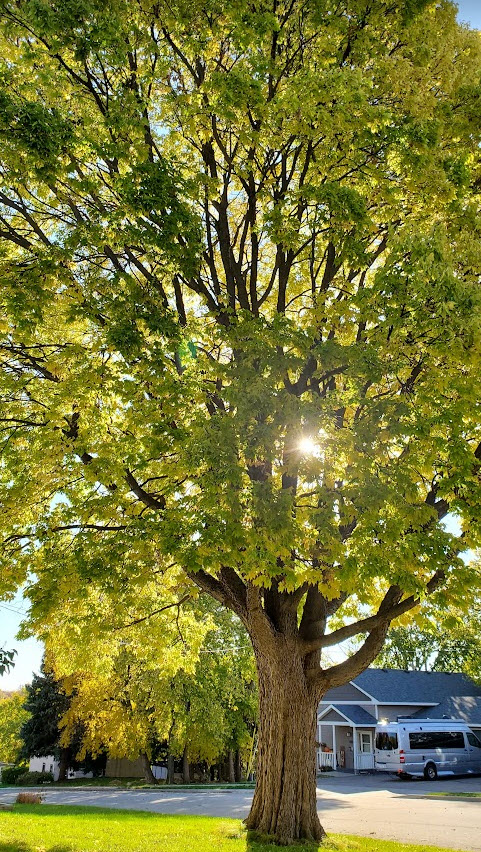
To assist wildlife, the answer is simple. Leave the leaves. They provide shelter for local wildlife including bees, beetles, butterflies, moths and more. This from the Xerces Society: At the end of summer, mated queen bumble bees burrow only an inch or two into the earth to hibernate for winter. An extra thick layer of leaves is welcome protection from the elements. There are so many animals that live in leaves: spiders, snails, worms, beetles, millipedes, mites, and more—that support the chipmunks, turtles, birds, and amphibians that rely on these insects for food.
Here is much more information on creating nesting habitat from the University of Minnesota Bee Lab.
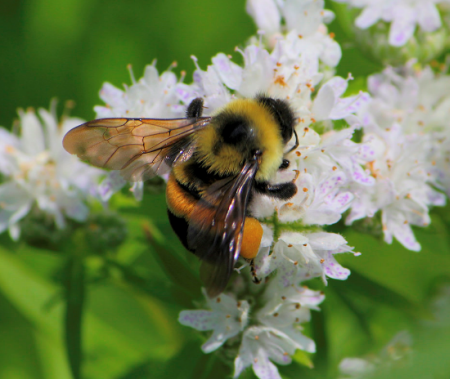
 Bumblebee on New England aster
Bumblebee on New England aster
Leaves also make for a great mulch. Rake them into your garden beds, pile them around your trees and shrubs. I have a recently planted Renaissance Spirea that I will pile the leaves around. I also have an area on the north side of my home where I ripped out all the plants that had been there. I will be piling a lot of leaves there, not only for shelter for the wildlife, but as the leaves breakdown, they will add some nutrient value to the soil. Note: I will shred them with the lawn mower first.
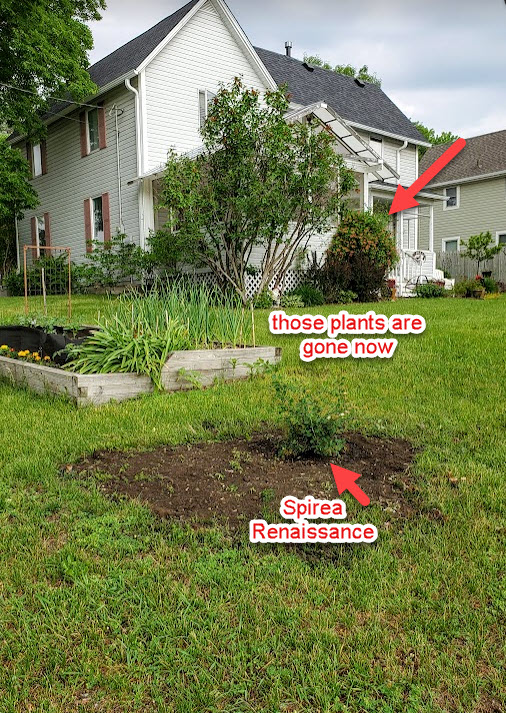
Due to work on the outside of my home, I also pulled out some barberries and perennials. This area will get leaves from my huge hackberry and my neighbor’s big, beautiful red oak. Those leaves land in my rain garden in early winter. The caveat to mulching with leaves is that when spring comes you don’t want thick layers of slimy, soupy looking leaves piled too thick. Shredding them first helps alleviate this issue. When they break down, whole leaves can take nitrogen OUT of the soil. However, the other option is to pile leaves up and make leaf mold!
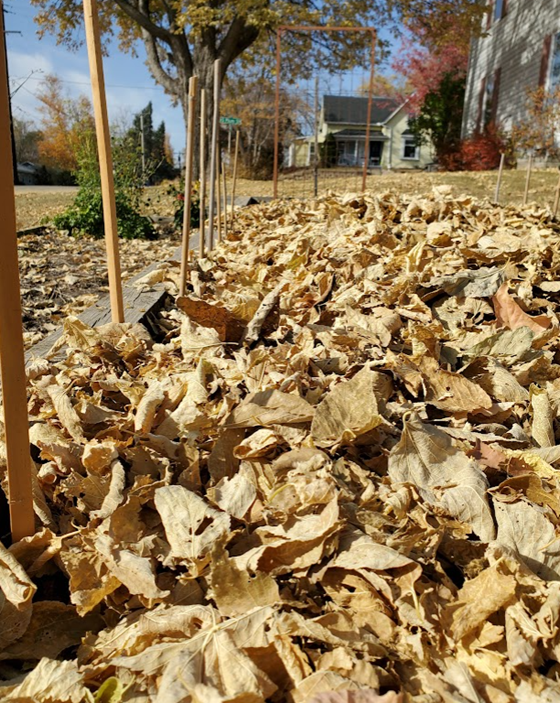
Leaves from the hackberry are moved to the raised bed, piled into other garden beds and stored on the other side of my garage!

Red Oak and my rain garden
This oak’s leaves drop late and that means they can get very thick in my rain garden so I DO have to get them out of there in spring.
Now for those perennials… there are reasons to leave them up and reasons to cut them back. For me, I leave nearly all my plants and grasses alone as I’ve seen so many goldfinches and other birds munching on the seeds, using the plants as perches and shelter.
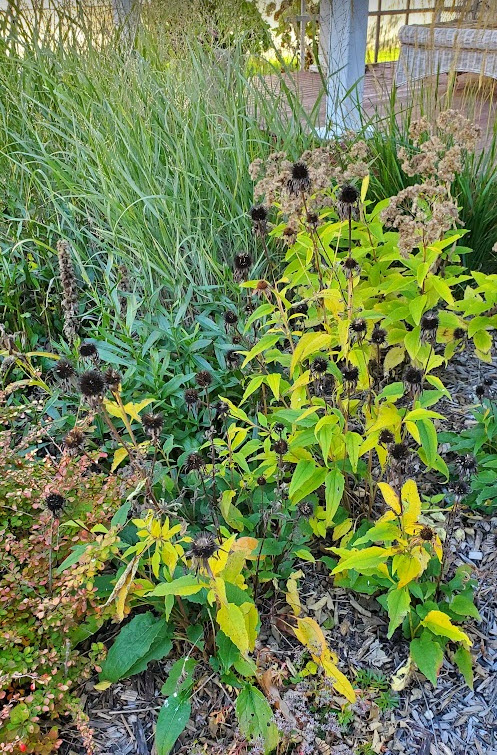
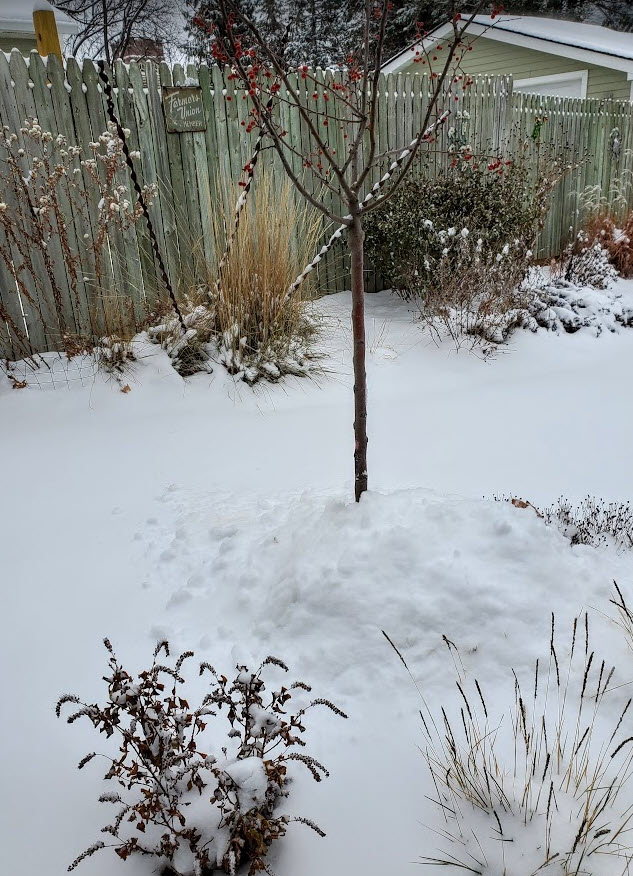
I also piled snow around the newer crabapple tree
Plus, the snow sitting on top adds interest to a sometimes bleak landscape!
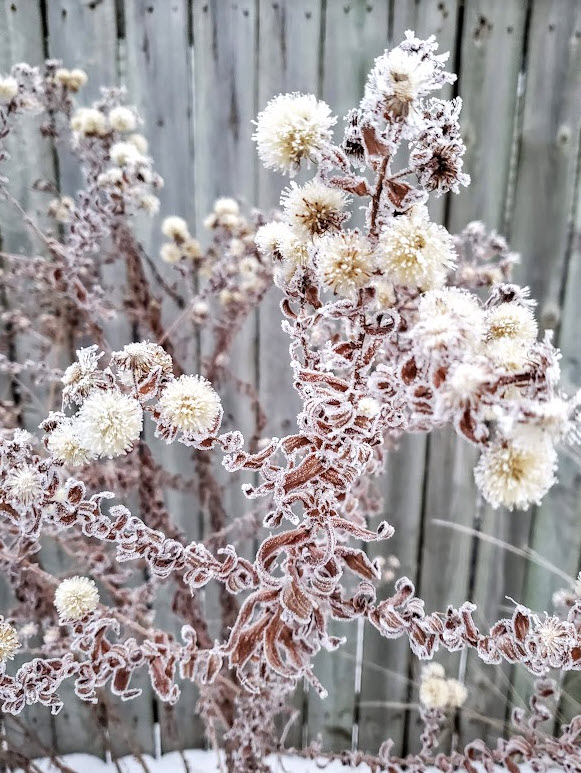
For those who prefer the Mr. Clean look, there are also benefits to that. If you have had issues with plant diseases, cutting those perennials back to the ground AND cleaning up the debris can help alleviate that problem next year.
Perhaps you have more time to do it now rather than in spring. Another good reason to cut them back now. Those hostas can look pretty icky when they’re hit with frost and get slimy looking! I cut them back to help with any fungal issue.
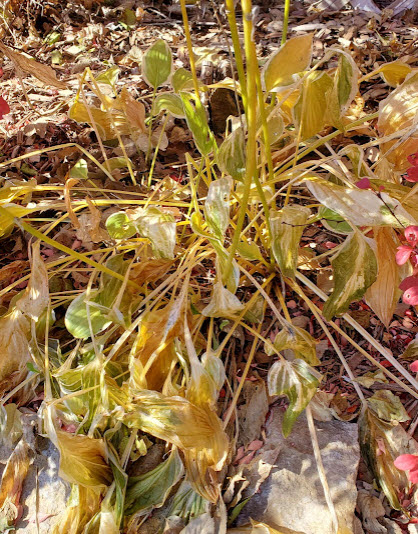
One more thing. Start planning your strategy to protect your yummy shrubs from rabbits and other chewing critters as well as winter cracking and burn. You’ll also want to provide winter protection to some evergreens.
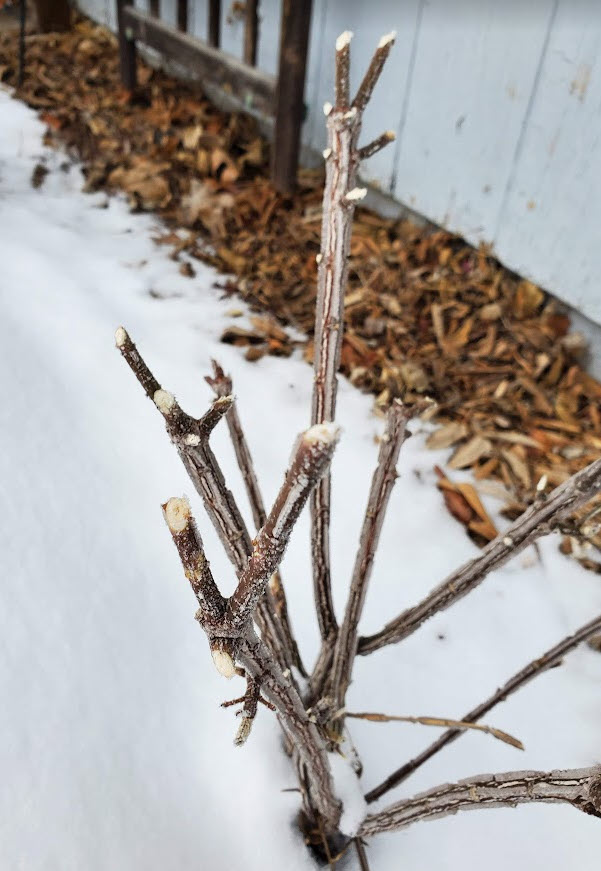
A Gertens tree expert, Brad, shares information on protecting small trees and evergreens:
